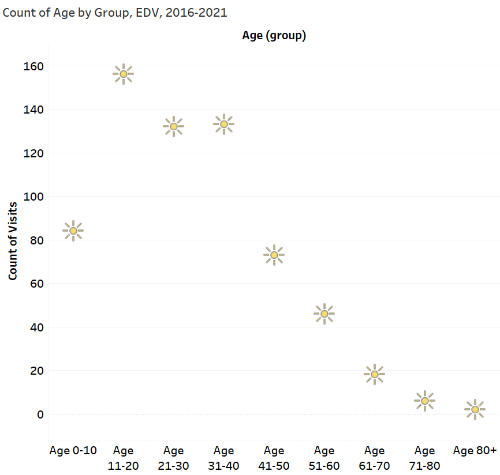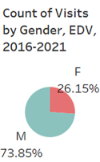Vol. 66, Issue 27
View more issues of The Valued Voice
Sign Up for WHA's Newsletter
Click here to view past issues
IN THIS ISSUE
- HRSA Pauses Plan to Withdraw HPSAs
- Congressional Panel Highlights Improper Delays and Care Denials in Medicare Advantage Plans
- FTC to Scrutinize Impact of Pharmacy Benefit Managers
- Otis Woods, DQA Administrator, to Speak at WHA’s Post-acute Care Conference
- Wisconsin Hospitals State PAC & Conduit Surpasses $200,000, Heads into Second Half of 2022 Fundraising Campaign
- GUEST COLUMN: Outsourcing Absence Management in the Health Care Industry
- Fast Facts from the WHA Information Center: Firework Safety
EDUCATION EVENTS
Jan. 6, 2026
Age-Friendly Webinar Series Featuring Advocate HealthJan. 14, 2026
Caring for Wisconsin’s Caregivers Well-Being First Champion Challenge for Credentialing KickoffJan. 28, 2026
2026 WHA Health Care Leadership AcademyClick here to view education event calendar
View more issues of The Valued Voice
Sign Up for WHA's Newsletter
Thursday, July 7, 2022
Fast Facts from the WHA Information Center: Firework Safety
Fourth of July celebrations immediately call to mind a few things: grilling some burgers or brats, spending time with friends and family or enjoying the beautiful Wisconsin weather. For most, one of the most signifying images of the celebration is fireworks. With family and friends beginning to gather again to celebrate, safety is an important consideration when dealing with possibly injury-causing pyrotechnics.
The U.S. Consumer Product Safety Commission (CPSC) found that there was a “50% increase in deaths and injuries form fireworks-related incidents in 2020, compared to 2019” (CPSC, 2021). About 15,600 people around the U.S. were treated in emergency departments for firework injuries in 2020, compared to about 10,000 in 2019. Eighteen people died from a firework-related injury in 2020; in 2019, 12 deaths were reported. Roughly 65% of all firework-related injuries occurred within a one-month span (June-July).

 The WHA Information Center analyzed data from 2016-2021 to see how often patients were visiting emergency departments for firework injuries. The average age of a patient visiting the emergency room for a firework injury was 30 years old. The age group that saw the highest visit counts was ages 11 to 20 years old. Nationally, the age group that saw the largest spike in firework-related injuries was ages 20-24 years old. Males had a much higher visit count for firework injuries than females—they accounted for roughly 75% of visits.
The WHA Information Center analyzed data from 2016-2021 to see how often patients were visiting emergency departments for firework injuries. The average age of a patient visiting the emergency room for a firework injury was 30 years old. The age group that saw the highest visit counts was ages 11 to 20 years old. Nationally, the age group that saw the largest spike in firework-related injuries was ages 20-24 years old. Males had a much higher visit count for firework injuries than females—they accounted for roughly 75% of visits.
The CPSC said burns were the most common injury treated in emergency room, accounting for about 45% of diagnoses. The main parts of the body injured were hands and fingers (30%), followed by head, face, and ears (22%). Firecrackers were the firework that caused the most injuries at 1,600 visits, followed by sparklers with 900 visits.
Here are some tips from the CPSC to celebrate this holiday season safely:
The U.S. Consumer Product Safety Commission (CPSC) found that there was a “50% increase in deaths and injuries form fireworks-related incidents in 2020, compared to 2019” (CPSC, 2021). About 15,600 people around the U.S. were treated in emergency departments for firework injuries in 2020, compared to about 10,000 in 2019. Eighteen people died from a firework-related injury in 2020; in 2019, 12 deaths were reported. Roughly 65% of all firework-related injuries occurred within a one-month span (June-July).

 The WHA Information Center analyzed data from 2016-2021 to see how often patients were visiting emergency departments for firework injuries. The average age of a patient visiting the emergency room for a firework injury was 30 years old. The age group that saw the highest visit counts was ages 11 to 20 years old. Nationally, the age group that saw the largest spike in firework-related injuries was ages 20-24 years old. Males had a much higher visit count for firework injuries than females—they accounted for roughly 75% of visits.
The WHA Information Center analyzed data from 2016-2021 to see how often patients were visiting emergency departments for firework injuries. The average age of a patient visiting the emergency room for a firework injury was 30 years old. The age group that saw the highest visit counts was ages 11 to 20 years old. Nationally, the age group that saw the largest spike in firework-related injuries was ages 20-24 years old. Males had a much higher visit count for firework injuries than females—they accounted for roughly 75% of visits. The CPSC said burns were the most common injury treated in emergency room, accounting for about 45% of diagnoses. The main parts of the body injured were hands and fingers (30%), followed by head, face, and ears (22%). Firecrackers were the firework that caused the most injuries at 1,600 visits, followed by sparklers with 900 visits.
Here are some tips from the CPSC to celebrate this holiday season safely:
- Never allow young children to play with or ignite fireworks, including sparklers. Sparklers burn at temperatures of about 2,000 degrees Fahrenheit—hot enough to melt some metals.
- Keep a bucket of water or a garden hose handy, in case of fire or other mishap.
- Light fireworks one at a time, then move away from the fireworks device quickly.
- Never try to relight or handle malfunctioning fireworks. Soak them with water and throw them away.
Vol. 66, Issue 27
Thursday, July 7, 2022
Fast Facts from the WHA Information Center: Firework Safety
Fourth of July celebrations immediately call to mind a few things: grilling some burgers or brats, spending time with friends and family or enjoying the beautiful Wisconsin weather. For most, one of the most signifying images of the celebration is fireworks. With family and friends beginning to gather again to celebrate, safety is an important consideration when dealing with possibly injury-causing pyrotechnics.
The U.S. Consumer Product Safety Commission (CPSC) found that there was a “50% increase in deaths and injuries form fireworks-related incidents in 2020, compared to 2019” (CPSC, 2021). About 15,600 people around the U.S. were treated in emergency departments for firework injuries in 2020, compared to about 10,000 in 2019. Eighteen people died from a firework-related injury in 2020; in 2019, 12 deaths were reported. Roughly 65% of all firework-related injuries occurred within a one-month span (June-July).

 The WHA Information Center analyzed data from 2016-2021 to see how often patients were visiting emergency departments for firework injuries. The average age of a patient visiting the emergency room for a firework injury was 30 years old. The age group that saw the highest visit counts was ages 11 to 20 years old. Nationally, the age group that saw the largest spike in firework-related injuries was ages 20-24 years old. Males had a much higher visit count for firework injuries than females—they accounted for roughly 75% of visits.
The WHA Information Center analyzed data from 2016-2021 to see how often patients were visiting emergency departments for firework injuries. The average age of a patient visiting the emergency room for a firework injury was 30 years old. The age group that saw the highest visit counts was ages 11 to 20 years old. Nationally, the age group that saw the largest spike in firework-related injuries was ages 20-24 years old. Males had a much higher visit count for firework injuries than females—they accounted for roughly 75% of visits.
The CPSC said burns were the most common injury treated in emergency room, accounting for about 45% of diagnoses. The main parts of the body injured were hands and fingers (30%), followed by head, face, and ears (22%). Firecrackers were the firework that caused the most injuries at 1,600 visits, followed by sparklers with 900 visits.
Here are some tips from the CPSC to celebrate this holiday season safely:
The U.S. Consumer Product Safety Commission (CPSC) found that there was a “50% increase in deaths and injuries form fireworks-related incidents in 2020, compared to 2019” (CPSC, 2021). About 15,600 people around the U.S. were treated in emergency departments for firework injuries in 2020, compared to about 10,000 in 2019. Eighteen people died from a firework-related injury in 2020; in 2019, 12 deaths were reported. Roughly 65% of all firework-related injuries occurred within a one-month span (June-July).

 The WHA Information Center analyzed data from 2016-2021 to see how often patients were visiting emergency departments for firework injuries. The average age of a patient visiting the emergency room for a firework injury was 30 years old. The age group that saw the highest visit counts was ages 11 to 20 years old. Nationally, the age group that saw the largest spike in firework-related injuries was ages 20-24 years old. Males had a much higher visit count for firework injuries than females—they accounted for roughly 75% of visits.
The WHA Information Center analyzed data from 2016-2021 to see how often patients were visiting emergency departments for firework injuries. The average age of a patient visiting the emergency room for a firework injury was 30 years old. The age group that saw the highest visit counts was ages 11 to 20 years old. Nationally, the age group that saw the largest spike in firework-related injuries was ages 20-24 years old. Males had a much higher visit count for firework injuries than females—they accounted for roughly 75% of visits. The CPSC said burns were the most common injury treated in emergency room, accounting for about 45% of diagnoses. The main parts of the body injured were hands and fingers (30%), followed by head, face, and ears (22%). Firecrackers were the firework that caused the most injuries at 1,600 visits, followed by sparklers with 900 visits.
Here are some tips from the CPSC to celebrate this holiday season safely:
- Never allow young children to play with or ignite fireworks, including sparklers. Sparklers burn at temperatures of about 2,000 degrees Fahrenheit—hot enough to melt some metals.
- Keep a bucket of water or a garden hose handy, in case of fire or other mishap.
- Light fireworks one at a time, then move away from the fireworks device quickly.
- Never try to relight or handle malfunctioning fireworks. Soak them with water and throw them away.
IN THIS ISSUE
- HRSA Pauses Plan to Withdraw HPSAs
- Congressional Panel Highlights Improper Delays and Care Denials in Medicare Advantage Plans
- FTC to Scrutinize Impact of Pharmacy Benefit Managers
- Otis Woods, DQA Administrator, to Speak at WHA’s Post-acute Care Conference
- Wisconsin Hospitals State PAC & Conduit Surpasses $200,000, Heads into Second Half of 2022 Fundraising Campaign
- GUEST COLUMN: Outsourcing Absence Management in the Health Care Industry
- Fast Facts from the WHA Information Center: Firework Safety

